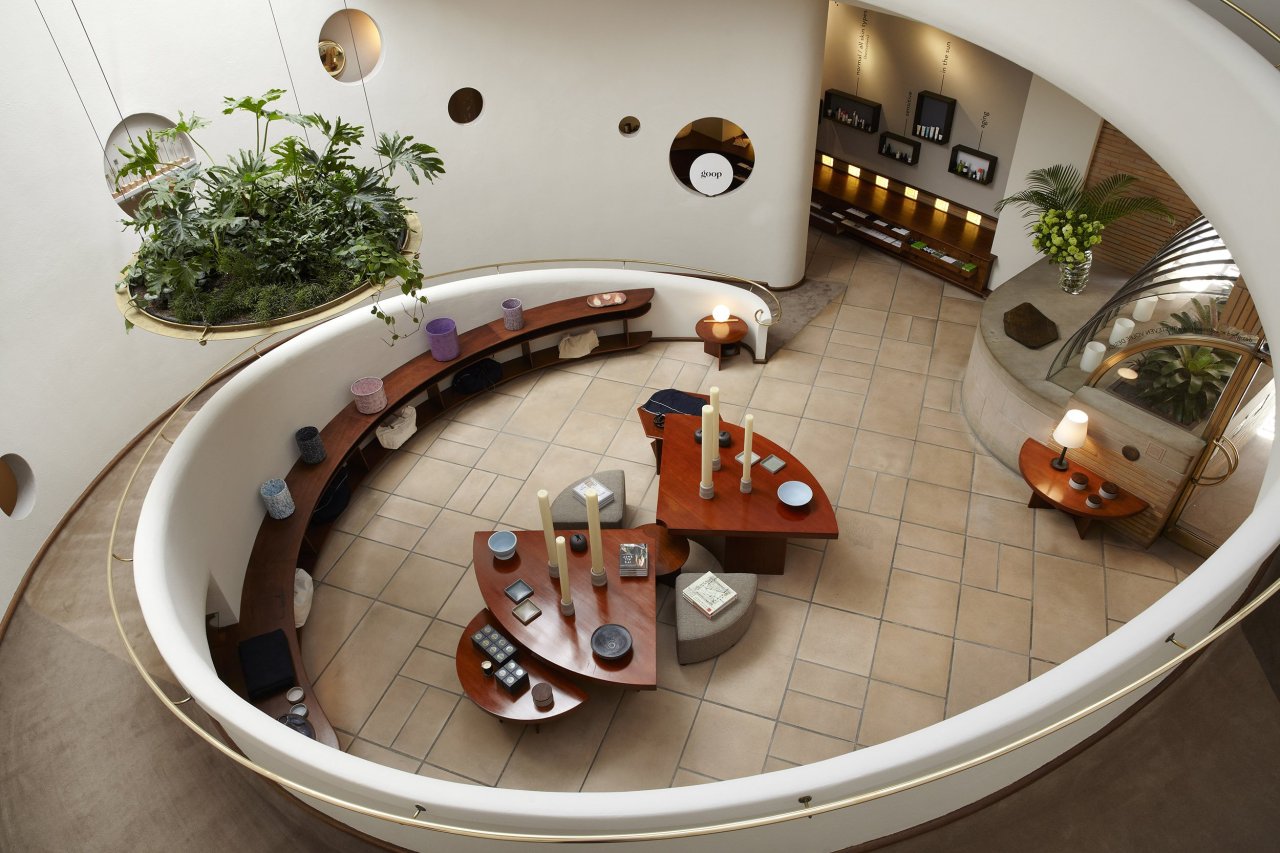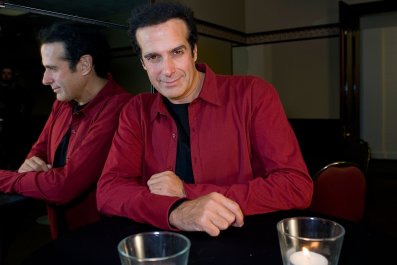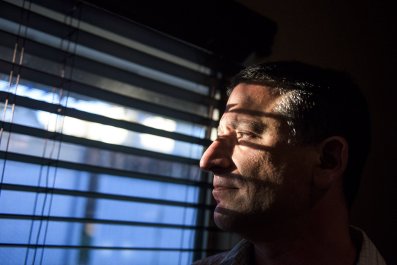There are many reasons to hate Gwyneth Paltrow: the Oscar she won before she was 30, the looks she has kept past 40. We miserable mortals divorce; she "consciously uncoupled" from Coldplay singer Chris Martin. She is friends with Jay Z and Beyoncé, happily inserting herself into their marital joys and woes. She writes cookbooks that have names like It's All Easy and It's All Good. Looking at Paltrow's healthful, tanned visage on the covers, you might believe as much. Except she might order from Katz's Delicatessen when she is in New York or sip a whiskey when she's on an overnight flight. You can imagine her squeezed into a Delta coach seat, downing lukewarm Jameson from a plastic cup. Except we both know that's not how Gwyneth gets to Paris.
Here's another reason to hate her: There is only one building designed by Frank Lloyd Wright in San Francisco, and it temporarily belongs to Paltrow. The building, on Maiden Lane, is being rented by her luxury lifestyle company Goop, which she started in 2008 and now runs full-time: She did one feature film in 2015, the lamentable Mortdecai, her screen career increasingly resembling the stuff VH1 documentaries are made of. She has gone from celluloid to cellulite treatments, and though Goop was reported to be in about $1.6 million debt a couple of years ago, Paltrow has a net worth of $60 million, which means you can probably put your charity dollars elsewhere. There must be some nonprofit that educates the public about massaged kale. Or there should be.
Because we have agreed to hate Paltrow, I'd love to tell you that she has desecrated the Wright space in San Francisco, plastering her face everywhere, ruining an architectural masterpiece with anti-GMO graffiti. This is not the case, it is my dispiriting duty to report.
The Gooping of 140 Maiden Lane (originally, the V.C. Morris Gift Shop, built in 1949) has been a respectful, subtle act. The spiraling interior—a prototype for Wright's vision of the Guggenheim Museum in Manhattan—is uncluttered, the merchandise pushed largely to the sides. If you're going to hate Paltrow, hate her for the ease with which she has coupled herself to Frank Lloyd Wright. Star, meet starchitect.
Goop MRKT comes to San Francisco at a time when the city has become the shimmering crucible of American inequality, with homeless encampments in the shadows of rowhouses that accrue several million dollars of value each time they are flipped. Hence the security guard who patrols the arched entrance to Wright's building, ensuring that none of the city's noisome realities intrude on the well-heeled shoppers, most of whom looked like they've arrived, via Lexus SUV, from the suburbs of Marin County. The rest are tourists, there to catch a glimpse of Gwyneth and gawk at ceramic cookware more expensive than many a domestic flight.
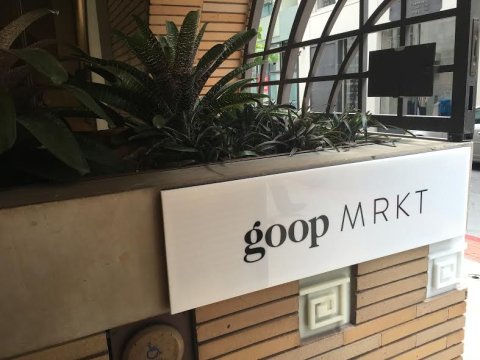
Paltrow has not always been the best advocate for her brand, in part because of ill-advised outbursts of honesty. "I am who I am," Paltrow once said. "I can't pretend to be somebody who makes $25,000 a year." At Goop, you never have to, not as you regard your splendid self in a $2,922 golden mirror which, like everything else about the Goop brand, is an expensive affirmation that your life is nearly as perfect as Paltrow's. The keys to luxury are yours. Once you've attained them, be sure to attach them to a $250 Stella McCartney pineapple keyring. Accept no imitations, like the $5 ones you can probably buy in Chinatown three blocks away.
The store's employees are much younger than its customers. They wear white shirts and off-white aprons. They look like they might refill your prosecco flute or perform major surgery. I would not be surprised if they could do both, such is the cheery competence they radiate. They all obviously knew that I was an imposter, and though I do not think they suspected me of stealing, we all knew that I was like a novitiate in an inner sanctum where he did not belong. If life is a series of acceptances, then I have come to accept that my head will never rest on a $175 "stone linen" pillow.
The merchandise suggests that Goop is an ancient Saxon word for "expensive, useless shit." There is a drawstring cloth bag, "made exclusively for Goop," for $58. The bag is to store chargers, which you know because the bag says so in plain blue lettering: "Chargers." You could use it for other purposes, but only if you're willing to incur Paltrow's wrath. So chargers you will store in your Parker Thatch Charger Drawstring Bag, peon.
There are also weird, conical candle holders, pillows the color of mud, an oversized wine glass for those exasperated by the act of pouring a second glass, or a seventh. Paltrow's vision reaches for a healthful paradise of comforts in the French countryside. But the Gooped household that coalesced in my mind was an airless suburban manse in Westchester County, north of New York City. A house in which no children laugh, no love is made, and nobody ever fries thick strips of bacon. There are wine glasses, but you may only drink seltzer out of them. The pillows are too precious to touch. Once in a while, though, Paltrow shatters her own illusions: The children's clothes section consists of run-of-the-mill Old Navy threads, made in South Asian factories by people who just might disagree with Paltrow about it all being easy, and it all being good.
As a matter of fact, much of what Goop sells can probably be bought elsewhere, either from the producer directly or, if you must, the Goop online store. But that's beside the point: You don't skip church just because you can read the New Testament in your basement. The point of visiting the Goop outlet in San Francisco is to bask in Paltrow's golden glow, to have her wisdom conferred upon your lowly self, what with your dry skin and high cholesterol and pillows from Target. Buying from Paltrow is sort of like voting for Trump: It doesn't matter if what she says about vitamin D is true any more than it matters that Mexico will never pay for a border wall. It is not a buying of but a buying into, a yearning for a certain kind of transcendent glory that they have and we do not. Such yearning is immune to reason.
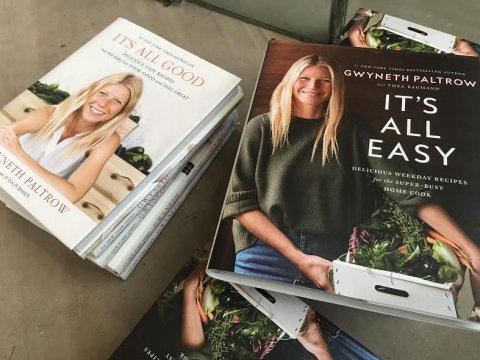
On the second floor, there is a kitchen alcove. Here, you can try some cold-pressed juice from Juicero, the $700 machine that is the digital generation's answer to the juicemaker. The company has $120 million in funding but, so far, has not explained how its needlessly complicated, offensively expensive contraption is any better than what you might get at Target for $44.99. It has something to do with compostable pouches and Wi-Fi and the endless desire to disrupt. The demonstration was conducted by an exceptionally good-looking, troublingly languid young man who reminded me of both Robert Pattinson and Dorian Gray. The juice took several minutes to make. It tasted OK.
Along another wall, there is a nature morte painting of some foods against a stark black backdrop. I have been discomfited by still-life paintings ever since I learned—at a Guggenheim exhibition, as a matter of fact—that the painter is often trying to communicate the impermanence of earthly things by showing those things (flowers, cuts of meat) in their prime, right before they start to rot. Here, in this temple of life lived in bountiful sunshine, was a reminder of the oblivion that awaits us all. Except maybe for Gwyneth Paltrow.


